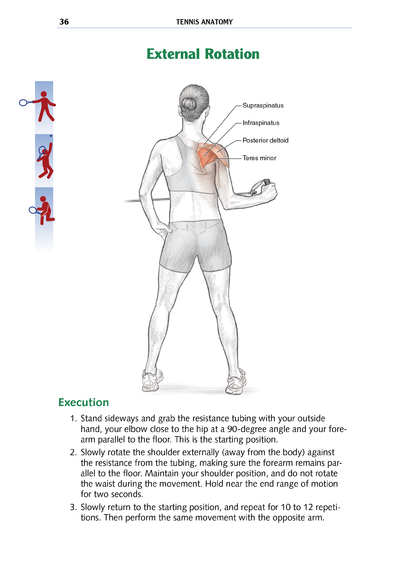 Not too long ago, I hurt my back while playing tennis. I never figured out how I did it. Clutzy moves? Complete lack of control and form? Old age? Bad luck? Probably all of those things. Anyway, I ended up just taking it easy for about two weeks until everything seemed normal again.
Not too long ago, I hurt my back while playing tennis. I never figured out how I did it. Clutzy moves? Complete lack of control and form? Old age? Bad luck? Probably all of those things. Anyway, I ended up just taking it easy for about two weeks until everything seemed normal again.But it really bothered me. How exactly did I hurt myself? And what could I do to prevent it from happening again?
About the same time I was asking myself these questions, the wonderful people at Human Kinetics offered me the chance to review another of their tennis books - Tennis Anatomy by E. Paul Roetert and Mark S. Kovacs. "Sure," I said. It sounded like something I might be interested in.
I believe this is where a weird concept called synchronicity comes into play and I'm not talking about the hit song by The Police. Synchronicity is when two or more apparently unrelated events occur together in a meaningful manner. E.g., just when I was wondering about my back and how to get it into proper shape for tennis, I get asked to review the book that tells me that exact thing. Creepy.
Anyway, as Tennis Anatomy's introduction explains, "[t]his book is written for serious competitive and recreational tennis players. Many tennis books emphasize fitness or strength and conditioning. Tennis Anatomy takes the next step and focuses on why and how you should get fit to play tennis."
Tennis Anatomy is simple to use - with chapters on "Shoulders," "Arms and Wrists," "Core and Torso," etc., it's easy to zero in on your problem and find the exercises and drills to help get tennis fit. Each chapter covers a different area of tennis anatomy and and provides a thorough explanation of the muscles, how they function in general and why they're strength is important when playing tennis. A number of weight-bearing exercises are illustrated showing how to build the muscles and then showing how these muscles come into play on the tennis court. Here's an example of the detailed illustrations using a recommended shoulder exercise. The first photo shows how to perform the exercise and what muscles are involved:

The really cool part is the second illustration, which shows you exactly how building your shoulder muscles with this exercise will help you on the tennis court:

There is also a chapter full of great on-court drills and a chart where you can zero in on what your pain or problem is, what might be causing it and how to deal with it.
I am really enjoying going over the illustrations in this book and finding ways to strength my strokes without even stepping on the tennis court. And if you or someone you know is a tennis fanatic, Tennis Anatomy would make a perfect gift (so this review is just in time for the holidays!).
Meanwhile, did I figure out the cause of my back problem? No. Am I performing Lat Pull-Downs, Seated Rows and Reverse Flys to strengthen my back muscles as recommended in Chapter 5? You bet I am.
You can order Tennis Anatomy and tons of other great tennis books at www.humankinetics.com.
Thanks to Human Kinetics for providing me with a review copy of Tennis Anatomy.
Images via www.humankinetics.com

© Kim Selzman 2011 All Rights Reserved

